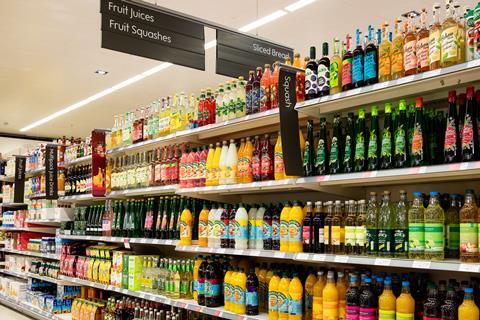
Waitrose is to bring back charging suppliers for shipments which do not meet its specified delivery standards, The Grocer has learned.
The supermarket initially suspended non-compliance charges during the Covid pandemic as a way of helping suppliers, many of whom were battling with operational challenges or shortages of core ingredients.
However last week, in an email seen by The Grocer, buyers from the supermarket notified suppliers Waitrose now plans to reintroduce the fees from “mid-April 2024”, as part of a wider “review” of its delivery standards process.
Like every supermarket, the high-end grocer sets strict delivery standards all suppliers must adhere to, as a way of maintaining product availability, quality and ensuring safety within its nationwide distribution centres.
Under the rules, a copy of which has been seen by The Grocer, examples of non-compliance include shipments that don’t have the required documentation or arrive more than 30-minutes after the agreed delivery slot.
The safety specifications and appearance of delivery vehicles, the minimum life on receipt (MLOR) of products, as well as the way products in specific categories are packed are some of the other requirements covered under the standards.
The supermarket has not declared the rate of the charges, but said suppliers will be notified of any pending charge via the supplier web portal, Waitrose Connect.
There is not thought to be any change to the terms of the specific delivery standards, and suppliers will still have 30 days to challenge any non-compliance charge as was previously the case.
“Delivery standards are normal across the industry, but were suspended during the Covid outbreak and its aftermath when our industry and suppliers were facing a particularly challenging period,” a Waitrose spokeswoman told The Grocer.
“We are confident the charges we are reintroducing will be fair and proportionate – but we have an honest and open relationship with our suppliers who are encouraged to raise any concerns.”
Alongside the reintroduction of charges, Waitrose said it had improved the way in which delivery standards breaches will be communicated to suppliers.
Previously, each supplier would be required to manually log into the Waitrose Connect web portal to see if they had been charged. Now they will receive an email notification if a charge has been raised.
Waitrose plans to introduce the email notification process in February 2024, as a way of testing the system ahead of the introduction of charges.
Charges are not a great ’incentive’
However, some suppliers have questioned the impact of reintroducing potential charges, at a time when input costs remain high for many.
“It’s not exactly a great motivator or incentive,” said the boss of one supplier with listings across the major supermarkets. “Fortunately we have very good availability and haven’t had many instances of charges, but there will be suppliers that have regular issues.”
Another ambient supplier expressed concerns that the relatively short length of Waitrose’s hour long delivery windows could lead to many being charged if there was major disruption to roads or travel networks. Ultimately it would depend on how “strict” Waitrose was going to be if any problems arose, the source said, although he understood the importance of Waitrose needing to ensure that its distribution hubs ran efficiently.
The supermarket had the lowest levels of availability when compared with the traditional big four last year, according to the latest Grocer 33 annual performance ranking.
Its average availability slipped from 91.6% to 90.9% between June 2022 and June 2023, as a result of prolonged shortages related to IT glitches. However, its performance has improved during the first half of this year’s survey.
The news follows a report by The Grocer last month that Waitrose was asking suppliers to submit “deflation proposals” to joint business plans, as it looks to rebuild margins in line with anticipated falls in the rate of food inflation.



















No comments yet